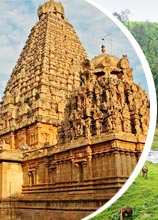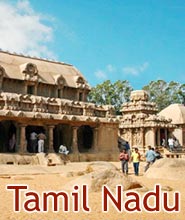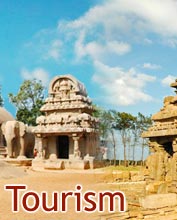 The
divine land of Chidambaram is dotted with architectural marvels of
temples both within the city and surrounding it. While planning an
excursion to Chidambaram keep your options open to visit several
tourists spots that's sure to make your tour thrilling and adventurous.
Pichavaram, 16 Kms from Chidambaram, has a stunning locale with
adrenaline pumping water sports, putting your stamina on test. About 30
Kms from the city is Neyveli is India's one of the biggest industrial
complexes. Kalvarayan Hills, 150 Kms from Chidambaram is best suited for
trekking among the scenic splurge of nature. Tarangambadi has Dansborg
fort built by Ore Gedde, the commander of the Royal Dutch Navy.
The
divine land of Chidambaram is dotted with architectural marvels of
temples both within the city and surrounding it. While planning an
excursion to Chidambaram keep your options open to visit several
tourists spots that's sure to make your tour thrilling and adventurous.
Pichavaram, 16 Kms from Chidambaram, has a stunning locale with
adrenaline pumping water sports, putting your stamina on test. About 30
Kms from the city is Neyveli is India's one of the biggest industrial
complexes. Kalvarayan Hills, 150 Kms from Chidambaram is best suited for
trekking among the scenic splurge of nature. Tarangambadi has Dansborg
fort built by Ore Gedde, the commander of the Royal Dutch Navy.Interesting Sites to Visit
Pichavaram
Ranking high among the most exquisite scenic spots Pichavaram, 16 kms. east of Chidambaram offers a host of varied tourism resources to relish. The stunning backwaters, which are interconnected by the Vellar and Kollidam system offer to your excursion an abundant scope for water sports - parasailing, rowing and canoeing.
Neyveli
One among India's biggest commercial complexes Neyveli is about 30 kms. from Chidambaram via Vadalur The lignite mined here is utilized for thermal power generation. Apart from fertilisers ceramic wares and Leco (cooking coal), a number of by-products are also produced from lignite.
Kalvarayan Hills
The imposing Kalvarayan hills are situated 150 kms north west of Chidambaram on the western side of Kallakurichi Taluk. Covering over an area of 600 sq. kms. With an approximate height ranging from 315 mts. to 1190 mts., these hills offer a temperate climate and a peaceful atmosphere. Enjoy your excursion here among the greenery of a beautiful botanical garden in the hill's lap. There are two waterfalls here. The area is best suited for trekking. A summer festival is also held every year in the month of May.
Tarangambadi
Once the site of a Danish settlement, Tarangambadi has the remains of the Dansborg fort built by Ore Gedde, the commander of the Royal Dutch Navy, in the 17th century. The fort constructed in 1620 with two storeys was the most important building, which housed the top echelons of the Danish officials. Apart from the ramparts, the rest of the buildings are in good condition.










